In a nondescript building in Brooklyn’s Williamsburg neighborhood, buckets filled with rusty screws, milk crates filled with antique transformers, and piles of scrap metal are carefully organized by type, color, size, and shape. Arrange, tucked into the back and corners of the floor.
Virginia Overton, the Brooklyn-based artist responsible for this organizing miracle, has used the space as her studio for the past year to complete a project: a new wall sculpture made of Part of the iconic old “Domino’s” sign that was once elegant. her works, Untitled (reverse virgule) (2024), just unveiled in the lobby of the newly renovated Domino Sugar Refinery office building, all this miscellaneous corroded stuff is the dregs of the sign—none of it has been used so far.
“The rest, of course, will be incorporated into other things,” Overton said The Art Newspaper Reassuringly, she noted that taking things apart, examining the pieces, and assembling them with parts from other disassembled items was what she did best. “It’s a bit like the mining process, uncovering potential and isolating it. I like constant new approaches.
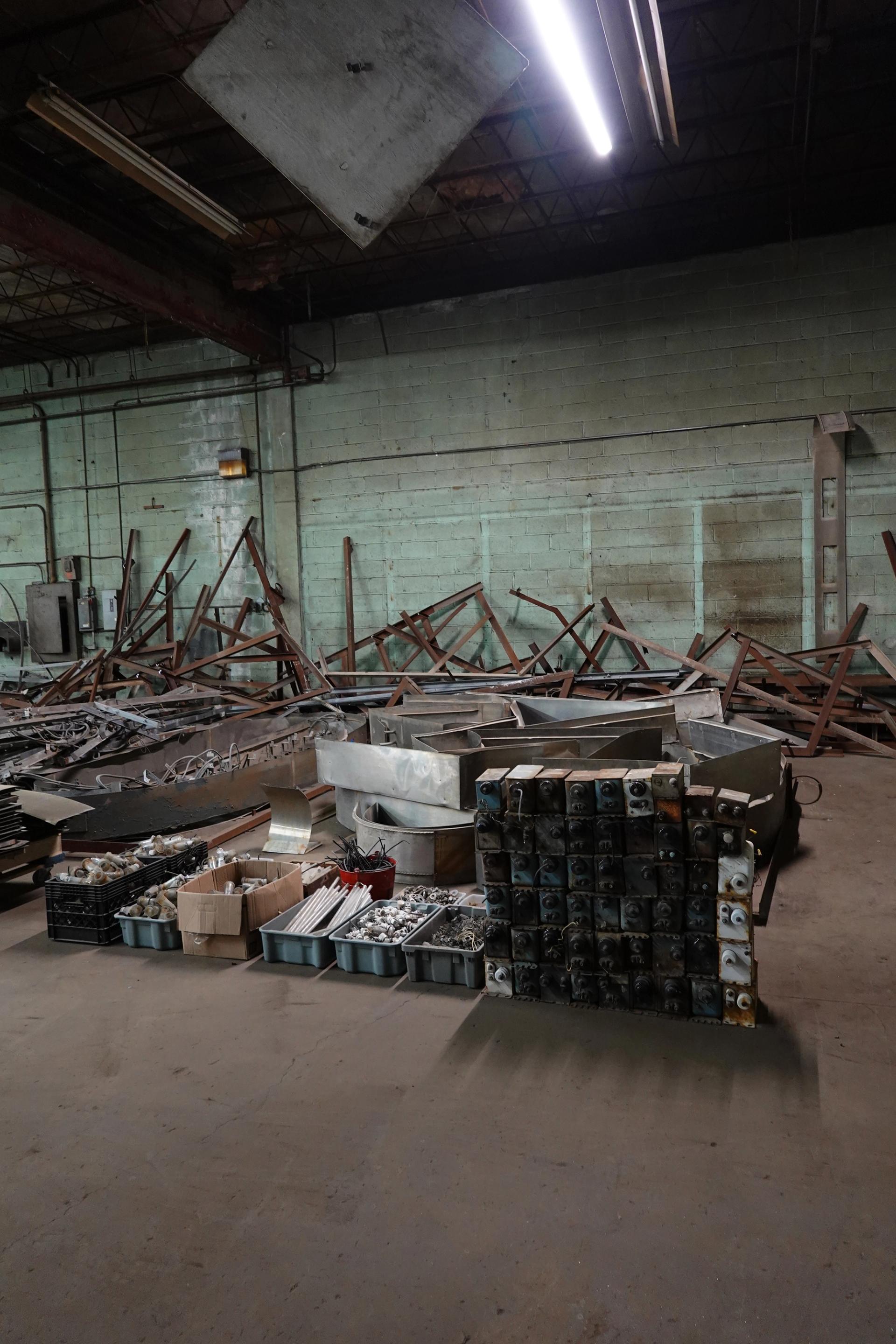
The interior of Virginia Overton’s beautifully appointed Williamsburg studio Courtesy of the artist
It took Overton six months to take apart the letters that once made up the 45-foot by 65-foot neon “Domino” sign. She excitedly showed off some broken parts of the original neon tube, which she had expertly restored so that she could experience the true color of the light against the yellow enameled steel letters.She later used a neon tube and the steel skeleton of some letters to create Untitled (pairs) (2024)—on display this week at the White Cube booth at Frieze New York. “Each component is fragile, but when you put it all together, it’s an awe-inspiring object. And some of the transformers still work!” Overton points to a pile of electrical components in the back of the studio. Box, said happily.
The part of the logo she ended up using in the installation was the haunting yellow letters. After carefully removing years of grime with Bar Keepers Friend liquid, she rearranged some (but not all) of the letter fragments into an 11-foot by 38-foot abstract wall sculpture—the final layout was just one of 75 different iterations she tried one of them.
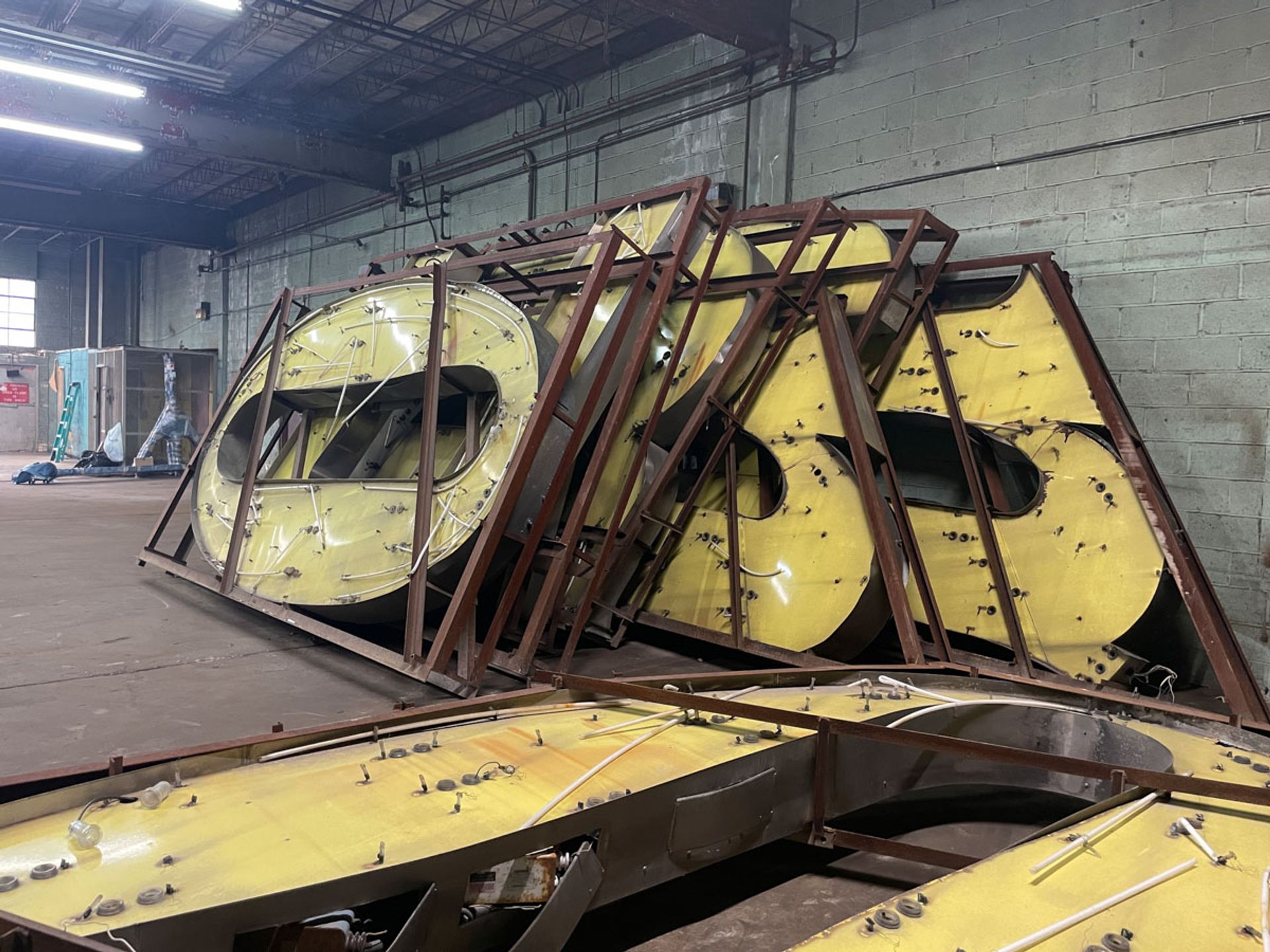
Virginia Overton’s studio was filled with letters on “dominoes” before she began dismantling them Courtesy of the artist
“I didn’t cut anything out. I wanted the materials to react a little bit to me and respect the way the logo was made and the hands that made it,” she said. “This is all handmade and I hope when we take it apart there will be a time capsule inside.” (There was no time capsule, but Overton did find an “unknown animal den” in one of the letters. ”.)
Kate Gavriel, director of cultural affairs at real estate firm Two Trees Management, said the craftsman who created this particular sign (installed in 1967) was Artkraft Strauss, a New York-based sign manufacturer. There are works of it all over Times Square.” Commissioner responsible for the renovation of Domino’s Brooklyn campus and the Overton Project. One of the historical icons of Artkraft Strauss is the Camel cigarette advertisement from the 1940s Smoke rings emanating from billboards and a giant Coke bottle In the 1990s, the world seemed to be (and continues to be) being opened up and swallowed by an invisible giant. Artkraft Strauss was also responsible for the production and placement of the Times Square Ball on New Year’s Eve, from the event’s inception in 1907 until 1996. Meet ferry commuters.
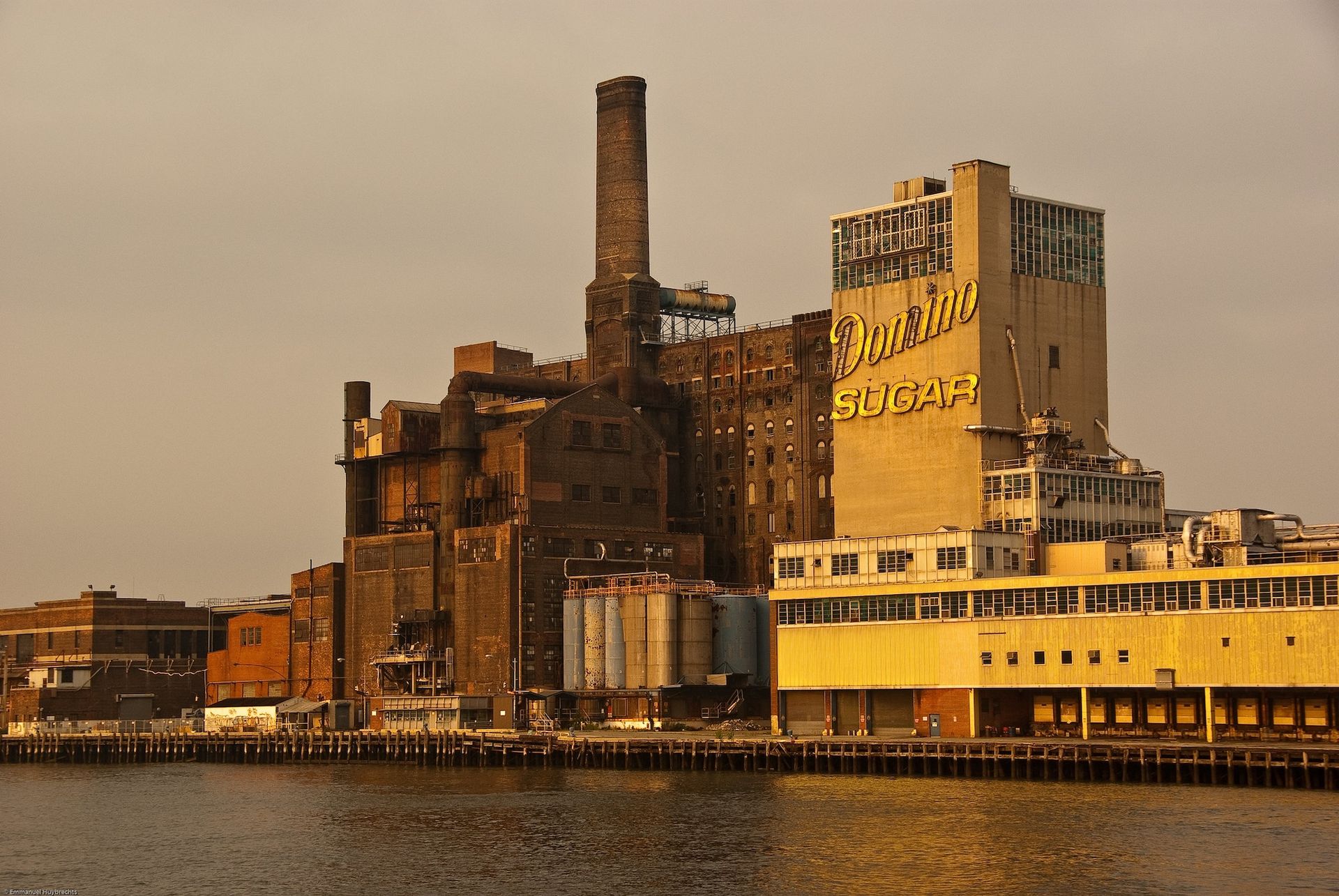
Artkraft Strauss’s 1967 logo remains at the abandoned Domino Sugar Factory in Brooklyn, 2008 Photo: Manu H via Flickr
In 2014, ten years after the sugarhouse closed, the Overton sign (the third “domino” sign to grace the building) was removed and the letters separated. As Gavriel said: “The sign hung on site because it was weatherproof and designed for the outdoors.” Although an exact replica of the sign was eventually made on top of the completely renovated building items, but the originals remained in many nearby locations for years, too large to fit into storage containers—even in their dismantled state. (“It can live outside, it’s very well built,” Overton said.)
When Two Trees first approached Overton four years ago to create a public program for the revamped Domino’s building, the artist said she immediately thought of using the logo, but Domino Foods needed some convincing. (The Domino Sugar plant in the Port of Baltimore remains operational even as the sugar industry has shifted toward high-fructose corn syrup and other sweeteners over the past few decades..)

Unpacking letters in Virginia Overton’s studio Courtesy of the artist
Domino’s’ main concern, Gavriel said, was: “What would our brand look like when it was turned into a work of art?” So she created a “Virginia’s Piece Pack” to show Domino’s, and they were pleasantly surprised. I have long been a fan of Virginia’s work.I like Socrates’ performance very much she has.I was drawn to her responses to industry, but she also has a body of work related to logos”. Importantly, Gavriel added, Overton’s work “is consistent with adaptive reuse and utilizing recycled materials” — in the style of Domino Park and other projects on the Brooklyn campus — which is why two trees were specifically designed with O. The reason for Forton’s contact.
Overton’s recent notable works include an installation at the 2022 Venice Biennale and a new Delta Air Lines terminal at New York’s LaGuardia Airport.; In both cases, she reviews the history and materials of the host site, focusing on labor, craftsmanship, and industrial design. (She is currently working on a project in Rome, for which she is conducting field trips to local quarries for materials and inspiration.)
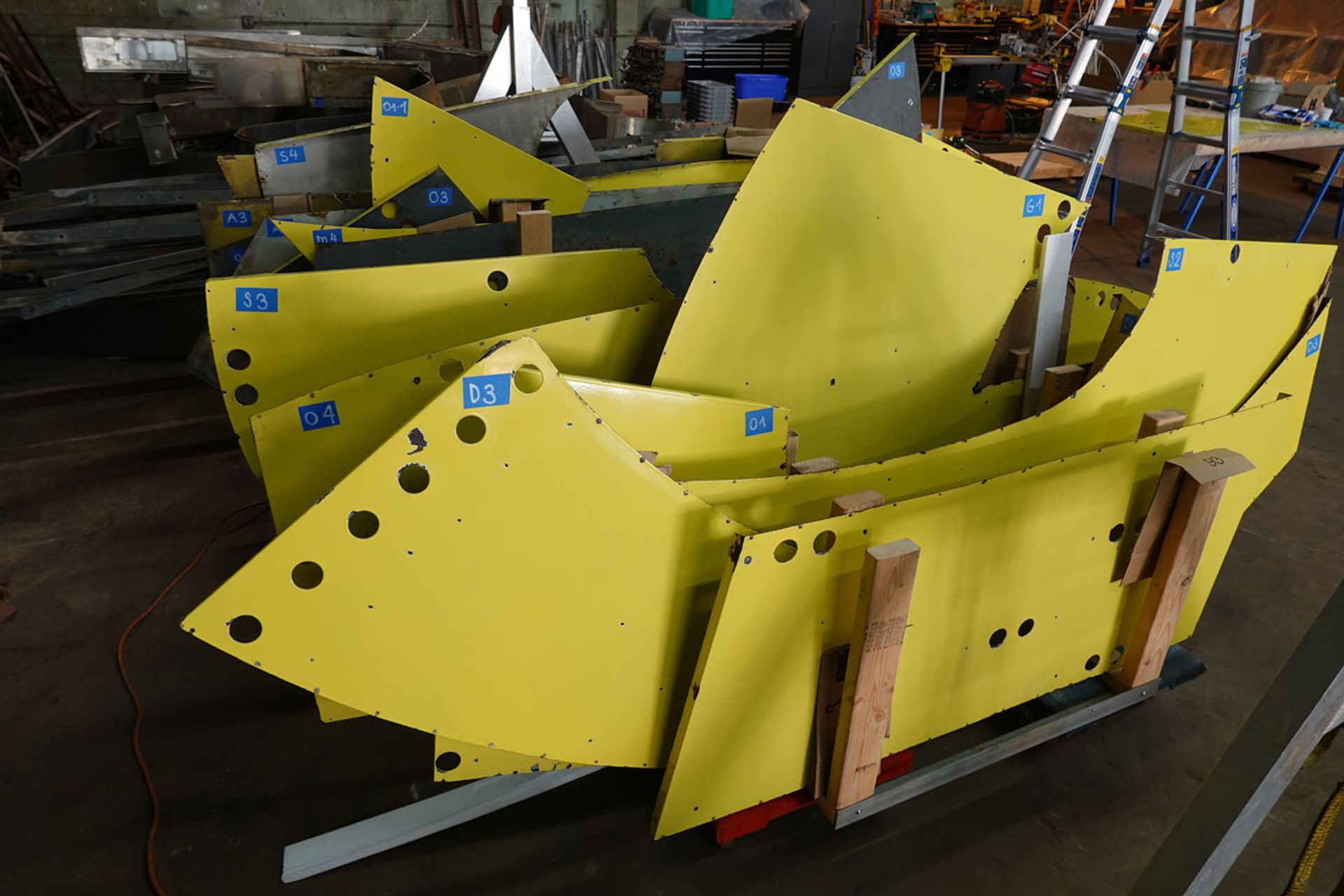
Virginia Overton carefully dismantled the letters “Domino” and washed the fragments with Bar Keepers Friend liquid Courtesy of the artist
The Overton Factory is far from the first public project at Brooklyn’s Domino Factory.Perhaps most famously, in 2014, when the site was still in its raw, abandoned state, Kara Walker created a giant sphinx sculpture made partly from sugar in the vast space of the refinery. Subtle, or marvelous sugar baby (2014) is a project organized by the non-profit organization Creative Time that directly connects the history of slavery to the sugar industry. The exhibition’s central sculpture, ultimately destroyed by natural disaster, is an interpretation of the ruins of an empire – like the sugar empire that once existed there.
The American Sugar Refining Company, which owned the Domino Sugar Refinery, was the largest sugar refinery in the United States at the end of the 19th century, and its Brooklyn base produced most of the nation’s sugar.Its founder was industrialist Henry Osborne Havemeyer, an avid collector of Impressionist art— collected a large collection of works that were later donated to the Metropolitan Museum of Art. But as sugar gave way to other sweeteners, the Domino Sugar industry slowly shrank, and refineries began to close and fall into disrepair. The shuttered Brooklyn refinery became a designated New York City landmark in 2007, and Two Trees bought it in 2012 for redevelopment. On the waterfront. In 2022, a replica of the “domino” logo was installed on the old refinery building.
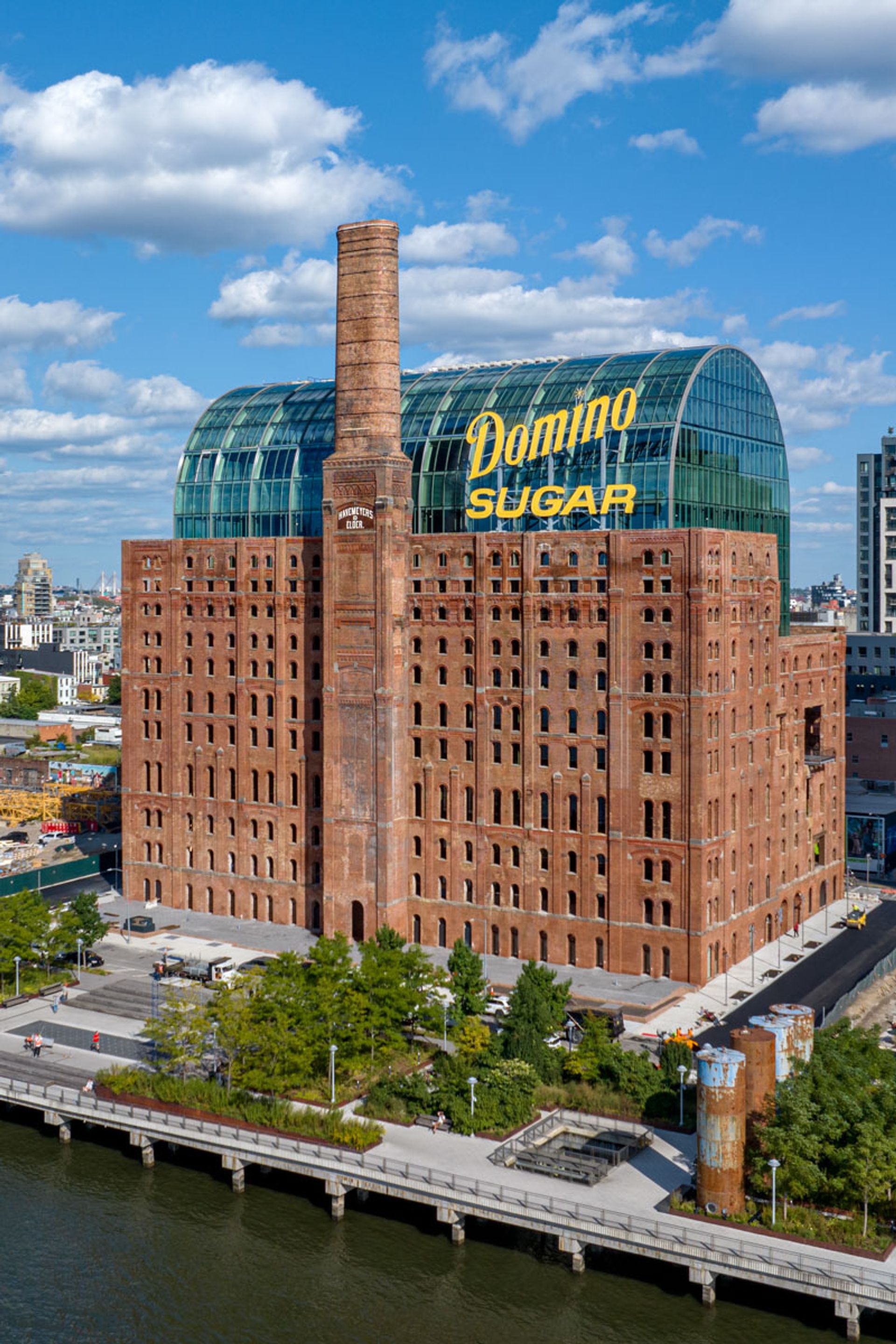
The Domino Sugar Refinery office building today, with the new replica logo on the roof Photo: Max Touhey, courtesy of Two Trees Management
As architecture critic Justin Davidson points out in his review The Domino Sugar Factory office building was overhauled when it opened last year: “At Domino’s, the present is actually contained in the past and at the same time breaks through it.” Overton’s abstraction of the “domino” symbol is an appropriate fusion of history and present Addendum – He has a special love for the amazing craftsmanship of individual (often anonymous) laborers.

